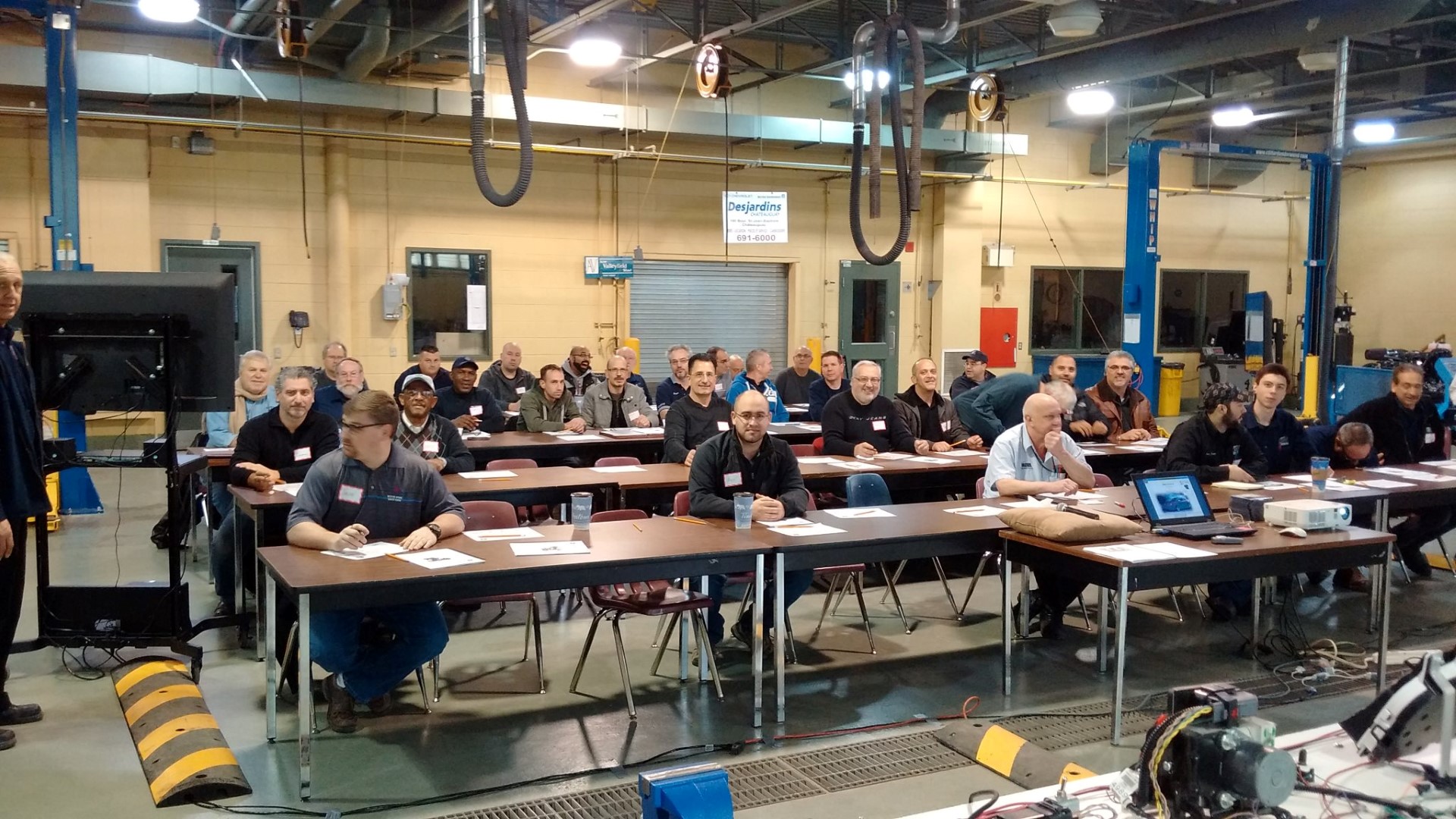This is what’s going on in NOVA Auto!
November 28th saw the largest crowd of automotive instructors ever to attend one of our bi- annual GM Training Seminars. Thirty six instructors from four different school boards gathered in our shop to learn from Algonquin College’s Lead GM ASEP Instructor Randy Scott. The topic of the day was engine management systems, focusing on the new Gen 5 small-bock engine and the new series of Spark Ignited Direct Injection engines, such as the 2.5l engine found in the 2015 Chevrolet Impala.
The instructors learned about the idiosyncrasies performing compression tests on the new Active Fuel Management Engines (GM speak for variable displacement or turning off cylinders). Using the GDS2 Diagnostic Scan-tool compression test function, fuel is disabled and the engine allowed to crank for only a specified amount of time. This removes the possible human error involved in trying to perform an accurate test. In the same vein, we also covered bench testing of the Valve Lifter Oil Manifold solenoids, part of the magic that allows cylinders to be shut down for AFM. This was actually pretty cool, using a special service tool we were able to turn on individual solenoids to verify their operation with compressed air. Using the same tool, we were also able to measure their individual electrical resistances without the need for component disassembly.
Data bus communication testing was also covered. Using the new “Data Bus Diagnostic Tool” feature available to the MDI allows technicians to efficiently diagnose faults and determine their point of origin on the three main CAN Data networks, those being: High Speed CAN, Mid-Speed Chassis Expansion Bus, and Low Speed CAN. This software essentially transforms the MDI scan-tool into a Digital Multi Meter, oscilloscope, and fault detector that will both visually and audibly alert a technician should a fault occur. Neat stuff!
Our own 3.6l test bench was used as a great example of what data is available to Automotive Technicians in the field. Between the twelve lists of data containing uncounted parameters, to the special functions needed just to bleed the pressure from the high pressure fuel system before servicing, it was a real eye opener. As I’ve said before the technology on today’s vehicles is simply amazing. It’s a great time to be involved in this trade if you enjoy challenges, changes, and never-ending learning.
As usual one of the best features of the day wasn’t on any floor plan, script, or schedule. It was the networking that happens whenever you get a group of dedicated professionals in one place. Just walking around during break and lunch, the range of conversations that could be heard was inspiring. I’d like to thank everyone who both attended and were involved in the preparation of the day, without your hard work and dedication none of this would have been possible. Thank you guys, you are fantastic!
Derek Stacey and Team
NOVA Auto Mech.

